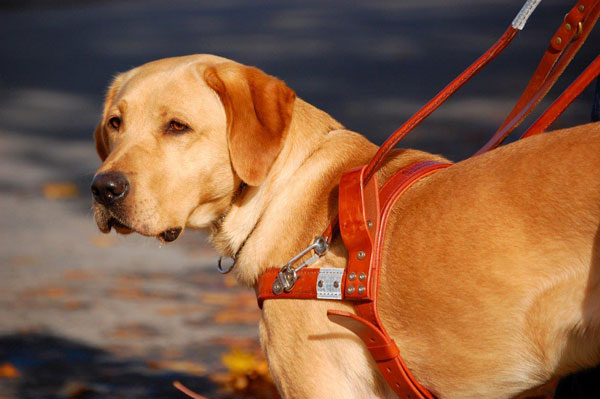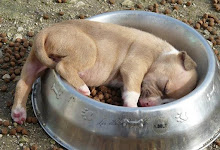|
|
Here are some safety tips you should think about before traveling by car with your favorite pet, whether they enjoy the journey or not.
1. Preparing to Travel with Your Dog
- If you don't want to crate your dog, at least find a way to confine it to a specific section of the car. For instance if you have a station wagon, consider confining your dog to the back portion of the car. If you do have a large window boot, put up a wire grid to stop your dog jumping over the back of the seats. Line the dog's area with dog blankets or place its bed in the corner so he or she can nap comfortably on the journey. Most dogs find sleeping an easy way to cope with motion sickness.
- You could also purchase a dog safety seat. While it is not as secure as a crate, it will be safer and more comfortable than a car seat for your dog if you turn or stop the car suddenly.
- To ensure that your pet cannot roam around the vehicle, consider purchasing a pet safety belt. These belts ensure that should an accident occur your pet is not thrown from the vehicle or into other passengers.
- Make sure the crate is secured either between seats or on the floor. Make sure it is very secure to prevent it from moving if you stop quickly or get hit.
Introduce your dog to the crate, if you are using one. Present the crate to your dog positively. Allow the dog to sniff the crate before it goes in the car. Once the crate is placed in the car, put your dog in it. Continue your positive attitude about the crate and walk away from the dog in the crate for several minutes.
Exercise your dog before loading it into the car. You need to get your dog tired before crating it. While a tired dog may still be upset about being crated, a fully rested dog will usually be even worse.
Avoid feeding your dog right before your trip. Feed him or her at least a few hours before. This will help your dog avoid getting carsick
Pack appropriate supplies for your dog when taking a long car trip. Make the dog's area comfortable by placing its bed or blankets down for padding. Also bring water, treats, the dog's collar and leash, some of your dog's favorite chew toys, and plastic bags for waste.
Place a few chew toys in the back with your dog to keep your dog occupied. It is better not to give him or her a bone or food treats because if the dog feels sick it will vomit it back up.
Squeaky toys are also undesirable as they will drive you crazy.
Consult your veterinarian if your dog shows signs of car sickness. Never medicate your dog with Dramamine or any other medication without the guidance of your vet. Your vet may have some other suggestions instead.
Address hyperactivity before the trip. If your dog has hyperactivity problems, contact your vet before the trip. See if a mild sedative is available and safe for your dog, especially if it is a long journey. Follow the dosing instructions carefully.
2. Going on a Long Drive with Your Dog

Let a puppy or new pet become accustomed to riding in a car gradually. Begin by allowing your dog to wander around your car with the motor off. Then start with short trips until you and your dog become familiar with traveling by car together.
Make your first few trips in the car to somewhere fun for your dog. Don't go long distances right away, just get your dog used to the space. Take your dog to a park or a field so they associate a car ride with something good rather than just trips to the vet.
Keep your dog's tags on whenever you are driving long distance. There's always a chance, no matter how well behaved your dog may be, that your dog will get out of the car and away from you. Make sure that your dog can be identified if it gets away from you while traveling.
Take breaks. Let your dog run around and tire itself out. You should also give your dog a little snack and a little water while taking your break. Make sure that you stop every hour or so and go for a quick walk, even if its only on the grass by a fast food restaurant on the highway. This lets your dog use the toilet, so you can also give him or her some water around now. Taking your dog on short walks is important as it means that the dog can stretch his or her legs and stops it from going crazy from being bored.
- This is especially important if your journey is more than a few hours. A four hours is your average dog's absolute limit for driving without a longer break. Make sure you stop somewhere grassy and relatively quiet (not right by the road), lock your car, feed your dog some food and water, and take him for a walk so he can let off some of his excess energy.
- If you stop by the highway your dog MUST be on a leash for his own safety.
Don't leave your dog in a parked car on a hot day. Be aware of how quickly a dog can get heat stroke, and die, in a parked car. To be safe, never leave your dog unattended in your car in warm weather for any length of time.
- If you stop for a meal, park your car in the shade, and let the windows down about an inch each to let cool air in. Put a bowl of cool water in the car for your dog and unbuckle him or her if in a dog seat. Lock your car doors, and order your food to go.
- Try to spend no more than five minutes away from the car if it is a warm day, as you don't want your dog to overheat. If your stop will take a bit longer, for instance you are waiting in a long line for food, tie your dog to a post either just inside the front door or just outside in a place where you can see it. At least he or she will be out of the heat while you wait. Make sure to tie the dog with secure knots so it doesn't escape onto the road. Tight knots will also mean it will be less likely for someone to steal your dog.
Avoid comforting your dog if he or she is showing signs of distress. Comforting the dog, as natural as it seems, reinforces the idea that something bad is happening. Do your best to stay calm and normal while paying attention for signs of true distress (instead of discomfort).
Reward your dog once you get to your destination. Take your pup for a long walk immediately on arrival. Give it a treat, assure it, and give it lots of love for making through the journey.

If your dog has a favorite towel or blanket be sure to bring it in order to comfort your pet.
Try to have your (non-toy*) puppy's first car rides be "on an empty stomach" by withholding food for 2-4 hours before the ride. Several rides without nausea will help tremendously to prevent the puppy from developing car sickness.
If you are traveling more than 24 hours, look beforehand for a pet-friendly hotel for you to unwind and for your dog too.
Make sure to bring doggy bags on your walks so you can pick up the pup's business.
Be patient, kind, and loving to your dog. Traveling is as stressful for the dog as it is for you!
Do not let your dog stick its head out the window. A piece of debris could get in its eye or if you got in an accident or stopped suddenly, your dog could go flying out the window.

0 comments:
Post a Comment